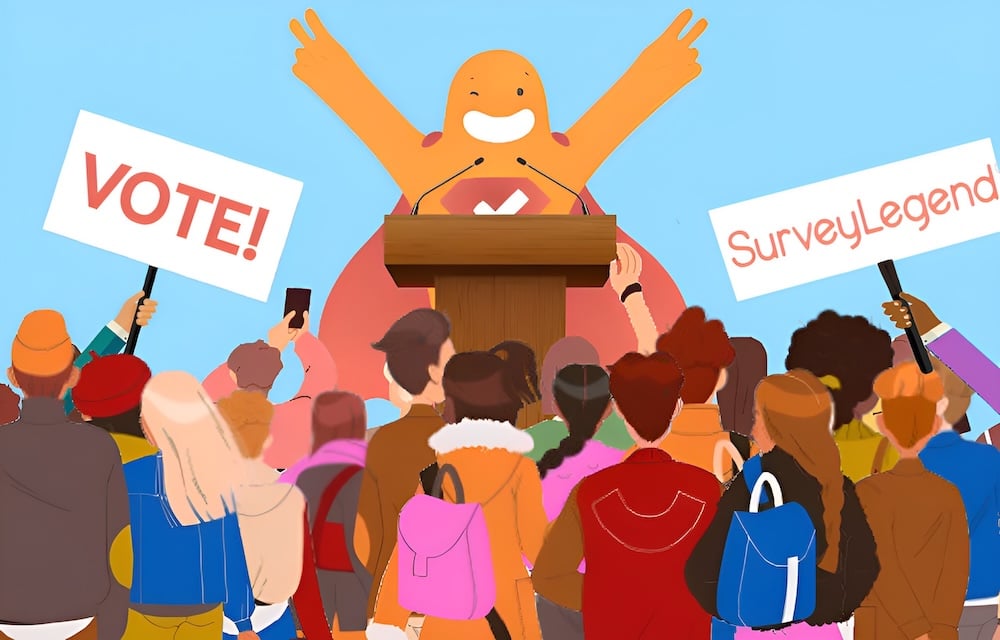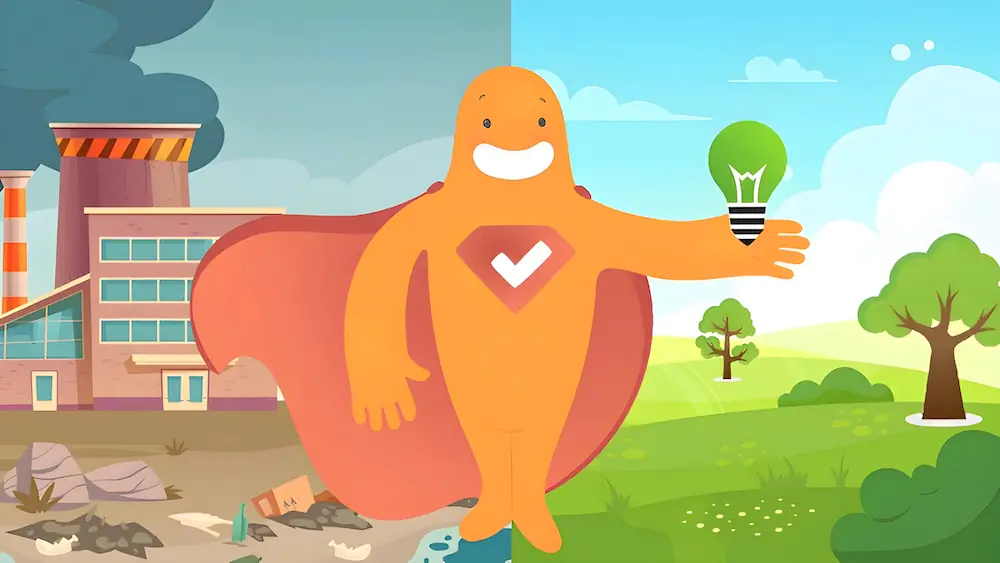An incredible 30,000 new products are launched every year. Unfortunately, 95% of new products fail. There are a number of reasons products fail. However, the 280 Group – a world leader on product marketing – finds that the number one reason products fail is a lack of customer research. Without customer research, marketers may not understand customer needs, launching a product that doesn’t solve the right problems, is priced too high, communicates the wrong message, or is just of poor quality. One way to avoid these pitfalls and have confidence in a new product launch is to conduct a product evaluation survey.
Create your product evaluation survey with images now!
Conducting a Product Evaluation Survey Before, During, and After Launch
Product testing is all about collecting feedback directly from customers or potential customers about a product. Product evaluation surveys can be used to accomplish this, and they can be sent out both before and after the product launch.
Pre-development product evaluation surveys are perhaps the most important. When developing a new product, one of the worst things you can do is to wait until the end of the development stage to test the product. At this point, a lot of time, money, and effort has been spent on the product, and if there’s a major flaw identified by test audiences, all of that was for naught. At this stage, simply supplying test audiences with a product concept is enough to get started.
Before the launch, and before any mass production begins, more testing can be done with an actual product prototype to gauge reaction to the real deal. At this stage, based on feedback, marketers may determine that the product is ready for a launch, needs some kinks ironed out before launch, or should be scrapped altogether.
Following the launch, product evaluation surveys should cast a wider net, collecting feedback from general consumers to gather their opinions on the product. The goal here is to make, if necessary, any minor modifications that consumers might recommend (it’s probably too late to go back to the drawing board, and with the proper pre-development and pre-launch evaluations, it hopefully won’t be necessary anyhow).
7 Reasons Why You Should Conduct a Product Evaluation Survey
We’ve touched on the importance of conducting a product evaluation survey questionnaire, but here’s a quick hit list of the top benefits.
1. Proof of Concept
As mentioned, before you spend time and money on development, it makes sense to get thoughts from potential customers. Marketers and product developers can be so in love with their own ideas that they can’t see the forest for the trees. An outside, objective opinion can often shed some light on some otherwise obvious issues.
2. Identifying Flaws
Before going into production on a new product with a large run, have potential customers evaluate a prototype. They may discover minor flaws that can easily be fixed, avoiding a product recall down the road. Think a product evaluation survey is a hassle? Then think about the PR nightmare you could have on your hands if a product gets recalled. Approximately 300 product recalls occur each year (that’s millions of units). And, recalls don’t discriminate. From food to pharmaceuticals, cars to phones, cleaning products to children’s toys, they happen within every industry.
3. End-Use Evaluation
After launch, product marketing doesn’t stop once the customer has made a purchase. If you want return customers or positive reviews, you need to validate the suitability of your product for the end-user. If it’s a complex product, you may find out they simply don’t know how to use it properly, which may just require some additional consumer education through a manual, email, or even a YouTube video.
4. Pricing Strategy
Many markets base price in comparison to competitors, or simply based upon the cost of goods sold + desired profit margin. However, potential customers may have other opinions that you’ll want to hear. After all, if you price it too high, you can lose sales. Go too low, and you can lose revenue. Check out other types of pricing strategies.
5. Packaging
Packaging can be as important as what’s inside the box! This accounts for the popularity of “unboxing videos,” which are nothing more than a video of someone opening up a box that they then share with others on social media. In fact, 1 in 5 consumers has watched an unboxing video! In addition, packaging tells people a lot about the product inside. Its price, value, messaging, imagery – all of this counts when it comes to packaging.
6. Marketing Messaging
Product evaluation surveys can also highlight how you intend to market the product (logos, brand names, slogans, and so on). This way, you can gauge what messaging resonates with customers the most. Need some branding help? Check out these 25 branding resources.
7. Product or Brand Identity
Discovering your product’s “personality” is another way to begin identifying your brand identity and marketing strategy. Do survey takers find the product fun or exciting? Smart or sophisticated? Sincere and safe? And so on. Learn more about creating a brand identity with surveys.
10 Key Metrics to Analyze in Product Evaluation Surveys
So what do you hope to achieve with your product evaluation survey? You want your survey to be as short as possible (in a study, the odds of survey response were approximately 50% higher for a shorter version of a questionnaire compared with the longer version). Of course, you want to ask enough questions that you still have data to work with. Some of the key metrics and product evaluation survey questions to consider for your survey include:
- Appeal: Does your product attract potential customers?
- Believability: Are your marketing and brand messaging believable?
- Innovation: Does your product seem innovative?
- Purchase potential: Do people want to purchase your product?
- Quality: Does your product appear to be of high quality?
- Relevance: Does your product fulfill a need or a want?
- Solutions: Does your product solve a problem?
- Uniqueness: How is your product different from the competition?
- Value/Price: Is your product a good value for the price?
- Personality: If your product was a person, what type of (car, music, clothing, hobbies) would your product enjoy?
A Likert scale is a great way to test your metrics. It’s simple and intuitive, provides consistent choices, and allows for easy analysis. An example would be (and you’ll see more of these in the survey example below) as follows:
Does this product appear to be of high quality?
- Extremely high quality
- Very high quality
- Somewhat high quality
- Not high quality
- Not at all high quality
Also, consider including screening questions and demographic questions so you’ll have a better gauge of who your target audience is (and isn’t) when conducting survey analysis.
Product Evaluation Survey Example
A product evaluation survey is even more powerful when you use imagery (sometimes, it’s almost impossible to conduct a survey without visuals). Using a visual survey helps engage participants, which improves response rate and the quality of your data. Here is an example of a product evaluation survey using a SurveyLegend survey with images. Using a visual survey or picture poll is especially important for determining proof of concept before a prototype or the final product has been delivered. You can also use a survey with images to compare products and for product recall initiatives. Check out this live product evaluation survey example below.
Conclusion
Data shows that thousands of new products fail every year. But, don’t let that stop you from trying. All you need to do is go about product development with the backing of research that supports the launch. Using a product evaluation survey, you can collect invaluable data that will help you determine whether it’s full steam ahead, time for a product or messaging tweak, or if it’s back to the drawing board – all before a major release has broken your budget.
Ready to create your product evaluation survey with images? SurveyLegend has you covered! With SurveyLegend, you can easily create engaging surveys with images that perfectly highlight your product and its messaging. You can add questions and images with ease, and choose from many different types of visual surveys, such as Likert scale, multiple-choice, ranking sliders, thumb up/down, and much more. SurveyLegend also allows you to create beautiful welcome pages, add branding elements and links, and more. Check out our free product evaluation survey templates or create your own today!
Do you use product evaluation surveys when developing or preparing to launch new products? Have you ever modified or scrapped a product or marketing message based on customer feedback on product? Sound off in the comments!
Create your product evaluation survey with images now!
Frequently Asked Questions (FAQs)
How many new products are released each year?
An astounding 30,000 new products are launched every year across all industries.
How many new products fail?
Studies show that approximately 95% of new products fail for a variety of reasons, including lack of research, wrong messaging or strategy, wrong target audience, overpricing, poor quality, stiff competition, or there just was no need in the marketplace (i.e., it solved for a problem that didn’t exist).
How do product evaluation surveys reduce product failure?
Product evaluation surveys allow marketers and researchers to gauge consumer reaction and collect their feedback throughout the development process and the pre-launch stage. This allows them to make modifications to the product, pricing, branding, or messaging and push their product out with more confidence that it will be successful.
Is there a free online survey for product evaluation template?
SurveyLegend offers a variety of pre-designed templates which you can find here: product evaluation templates.
What are some sample product evaluation survey questions?
A survey for product evaluation might ask customers if they found the product useful, i.e. does it solve a problem. It may ask about price, quality, messaging, and uniqueness compared to other items on the market.





